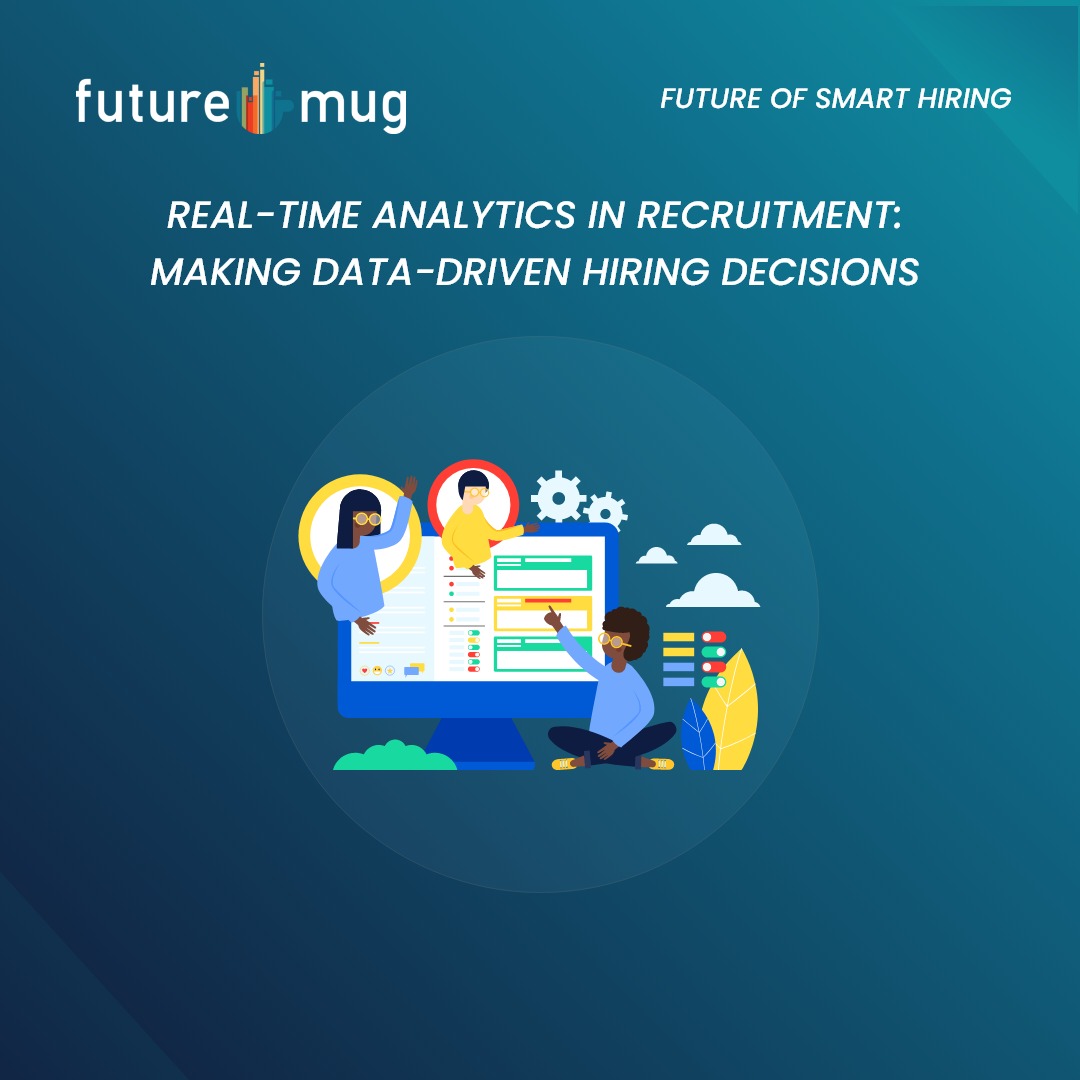
Real-Time Analytics in Recruitment: Making Data-Driven Hiring Decisions

This statistic was arrived at in a survey conducted by the software company, Sage People. The survey revealed quite a few interesting findings regarding how data is being used in hiring decisions. Read the survey report here:
https://www.shrm.org/topics-tools/news/technology/report-hr-lags-using-data-to-make-decisions
When it comes to hiring candidates for companies today, the traditional recruitment method is insufficient to identify quality talent. Being up-to-date with the changes in the job market and making swift hiring decisions that are data-driven can be crucial to finding the right talent at the right time. With real-time analytics in recruitment being made possible, the recruitment process has undergone a paradigm shift. The hiring process is more streamlined, and data is playing a key role in making swift and precise hiring decisions.
From intuition-based hiring to recruitment that is data-driven
Recruitment has always been a manual process, with very little to no dependence on machines or automation. Gut instincts, biases, and other human aspects did play a key role in making hiring decisions. Many subjective criteria were also used to assess candidates and conduct interviews. Thus, a lot of hiring decisions proved to be the wrong fit for the job.
With real-time analytics, companies have access to objective data as well as a lot of in-depth and comprehensive information to arrive at their decisions. In addition to candidate skills, and competencies, recruiters also have access to their soft skill levels and how well they might fit in with the company culture. This helps to identify skilled candidates, streamline the hiring process, reduce time-to-hire, and improve the overall candidate experience.
Key Benefits of Real-Time Analytics in Recruitment
- Identify the most effective sourcing channels – real-time analytics makes it possible to identify the best channels that yield quality talent consistently. Thus, the companies can focus more on these channels to access the desirable talent pool.
- Efficient candidate screening – real-time analytics makes use of various algorithms and machine learning models that improve the efficiency of candidate screening. They help identify competencies that are most important for the job and ensure that the most suitable candidates alone move forward in the process.
- Predictive Analytics for forecasting future outcomes – predictive analytics helps the organization understand how a candidate might perform in his job in the future. This is very valuable information to have at the time of hiring.
- Greater diversity in the workforce – real-time analytics foster a more fair and inclusive hiring process. This results in greater diversity in the workplace.
- Streamlines the entire hiring process – through the automation of various tasks and workflows, the entire hiring process becomes more robust and streamlined. This reduces the time-to-hire, time spent on administrative tasks, and helps manage the recruitment process better.
Making use of analytic data for hiring the best candidates
To make the most of real-time analytics, organizations must approach their hiring process differently. It should be data-driven. It should integrate other technologies and tools.
Let us look at some key steps that can be adopted to leverage the analytic data most efficiently:
- Implement advanced recruitment technology – to collect real-time data for analysis, organizations need to invest in the required technologies. Applicant tracking systems (ATS), CRM tools, and AI-powered recruitment platforms are all very helpful in leveraging the many benefits of real-time data analytics.
- Define key metrics and performance indicators – to make sense of data analytics and use them extensively to make hiring decisions,it is necessary to define the various KPIs and key metrics. By monitoring how well these are achieved, recruitment strategies can be adjusted if necessary.
- Utilize predictive analytics – predictive analytics allows companies to understand how their employees will perform in the future. This information, if available at the time of recruitment, can be a game changer and will save the company a lot of time, effort, and cost in the long run.
- Continuous improvement – real-time data needs to be monitored continuously to ensure that it continues to benefit the organization and that it is up-to-date with respect to the changes that are happening in the organization and the recruitment landscape.
Real-world examples of real-time analytics in recruitment
Google has been a front-runner in adapting new technologies across the board, and they have leveraged analytics to reinvent their HR practices. The following blog explains how this is done.
https://www.peoplehum.com/blog/how-google-is-using-people-analytics-to-completely-reinvent-hr
Here is another real-world example of how IBM is using AI to promote diversity and inclusion in its workforce.
https://www.linkedin.com/pulse/transforming-hr-ai-real-world-example-from-ibm-tanvi-sharma-lvqnc/
The Future of Real-Time Analytics in Recruitment

Real-time analytics is already a key factor in recruitment and its importance will only grow in the coming years. However, not all organizations have the resources to integrate AI and various other supporting tools and technologies to enable real-time analytics in recruitment. In such situations, they should rely on third-party services and platforms to enhance their hiring processes and find quality candidates.
futuremug has developed services and platforms that are futuristic and heavily use AI and real-time analytics to help startups, mid-size companies, and large organizations all find top talent. The following blog talks about how AI is powering the futuremug online assessment platform to help companies find quality resources.
We urge organizations of all forms and sizes, to leverage analytic data to effectively identify skilled candidates, streamline their hiring process, and onboard suitable candidates who will perform well at their jobs in the future. A diverse and well-fitted manpower base can give organizations a considerable edge over the competition and ensure long-term profitability and success.